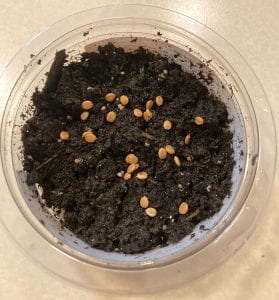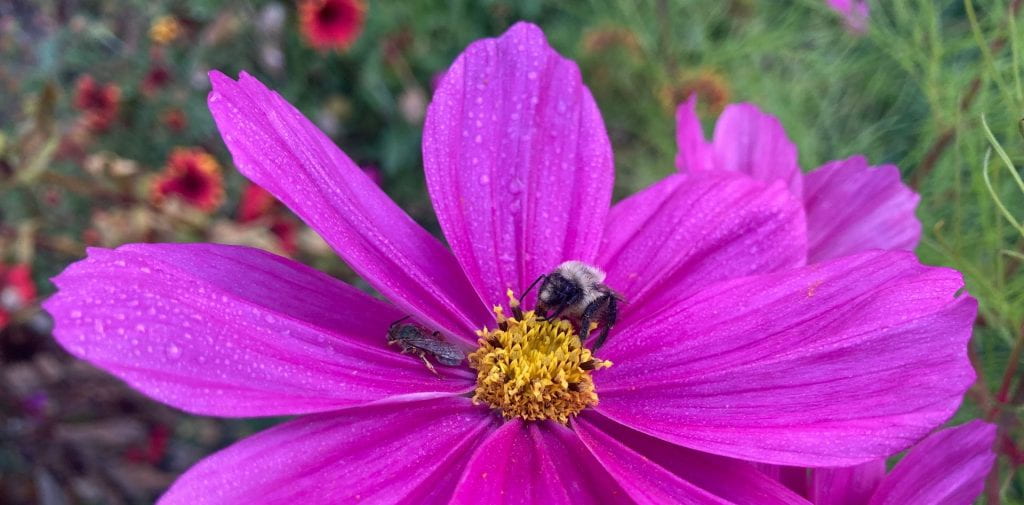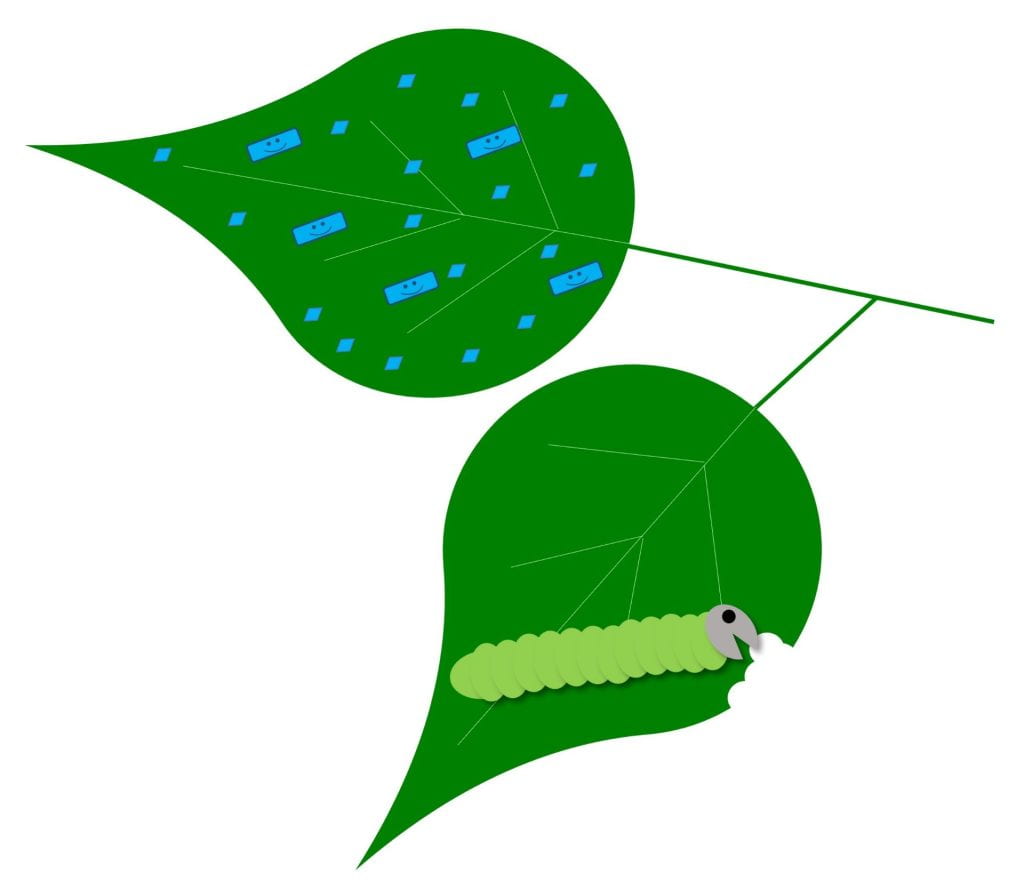
Perhaps you have heard that “fall is for planting.” Did you also know that fall is not just for transplanting perennial plants, it’s also a great time to plant seeds of perennials. Here I will focus on seeds of perennial plants that will provide food (pollen and nectar) and shelter for insect natural enemies and pollinators.
Many people understandably think about spring as the season for seeding. When it comes to vegetables and flowers that grow as annuals in New York State (and other places with similar climates), you’re generally right. (Of course there are exceptions to every rule.) But many perennial wildflower species have adapted to produce seeds that won’t germinate immediately. Certain conditions have to prepare and signal these seeds to germinate. They require stratification prior to germination. If you are trying to germinate these seeds, you can stratify them yourself, or you can let winter cycles of freezing and thawing and fluctuating soil moisture do the work for you by planting perennial wildflower seeds in the fall.
How to sow perennial wildflower seeds in the fall
If you want to try this yourself, now (September) is a good time to prepare soil in a spot where there aren’t a lot of other plants growing already. If you’re trying to convert lawn or a weedy spot into a wildflower planting, it will be easier if you’ve spent at least one growing season managing weeds. But, if the summer flew by and you are just digging up a fresh spot now, don’t despair. You may just have more weeds to deal with in the spring. (More on weeds later!)
Once your soil is ready, put a note on your calendar to remind yourself to plant your seeds a bit later. In central NY, mid-October through December is a good time to sow perennial seeds outside. You want to wait until it’s too cool for the seeds to germinate this fall. Perennial wildflower seeds will germinate and the young plants will establish best if you invest some time in creating a nice seed bed for them first.
- Ideally, select a spot where the soil is mostly bare. Pull or dig out remaining weeds. Depending on when you want to plant seeds, you could use cardboard or a tarp to help you kill existing vegetation first. You could also use an herbicide, but make sure you select a product that is labeled as an herbicide. Do NOT mix your own herbicide from ingredients around your home. Always read and follow the label when applying any pesticide, including herbicides.
- Loosen the soil. You can use a shovel, rake, digging fork, or other tool, depending on the size of your planting area. You want the soil to be nice and crumbly and have “nooks” for the seeds to fall in to.

If you prepare your soil now (late September), make sure you check it just before you are ready to plant your seeds. Repeat step 2 if necessary to provide your seeds with a nice seed bed. And remove any weeds that may have sprouted!
- Between mid-October and December (in central NY), scatter the seed on the soil. If you are using a mixture of wildflower seeds, follow the instructions that came with them to spread the seeds at the correct density. If you are just planting a few seeds, you might sprinkle them in rows so they will be easier for you to spot when they start germinating.
- Gently mix the seeds into the soil, but no deeper than ¼ of an inch. Generally, the smaller the seed, the shallower it should be planted. If you have a larger area, a rake is a good tool to use. If you are planting a few seeds per species, you could use a hand rake or even a fork from the kitchen. Get creative!
- Press the seeds into the soil. You want the seeds to be pressed tightly against the surrounding soil. You can use your hands, feet, or a roller depending on the area you are planting.
- Label your seeds. Make sure you know where to look for your seedlings in the spring! Add some markers to remind you where to look.

In Spring 2025 I will share some tips and pictures to help you recognize your seedlings as they start to germinate (amongst the inevitable weeds that will be there, too).
A few words on weeds
Unless you have spent literally years depleting the soil of weed seeds, it is inevitable that there will be some weeds germinating with your perennial wildflower seeds in the spring. If you are planting a larger area with a seed mix and planning to manage (annual) weeds with mowing, this is not such a problem. You will be mowing the area for the first few years to prevent annual weeds from producing seed and effectively reducing the weed seed bank. Like other perennials, your wildflowers will survive the mowing just fine.
If you are planting just a few seeds of each species and carefully marking their location, this will help you know where to look for germinating perennials in the spring. Planting in rows (or some other pattern) may also help, but you’ll need to be careful not to disrupt your pattern when you gently work the seeds into the top ¼ inch of soil.
Here is more information about managing weeds when creating habitat for beneficial insects.
Another alternative
To get around some of the above weed challenges, I’m told that the “Winter Sowing Method” developed by Trudi Davidoff works well for native perennial wildflowers. But you should probably delay planting the seeds until November or December if you’re using this method. Essentially, you create a mini greenhouse using potting mix in a repurposed transparent plastic container (like a milk jug) with drainage holes. Leaving the container outside and exposed to rain allows the seeds to experience temperature and moisture fluctuations. Since your seeds are planted in potting mix in a discrete container, you won’t be fighting weed seeds and you’ll know where to look for your seedlings. An episode of the Growing Greener podcast describes how this method is used for native perennials.
Check out my full instructions for creating habitat for beneficial insects to learn more about other methods for establishing these plants. And remember that growing perennial wildflowers from seed will take some time. Be patient!

This post was written by Amara Dunn-Silver, Biocontrol Specialist with the NYSIPM Program.
This work is supported by NYS Departments of Environmental Conservation and Agriculture and Markets.


































